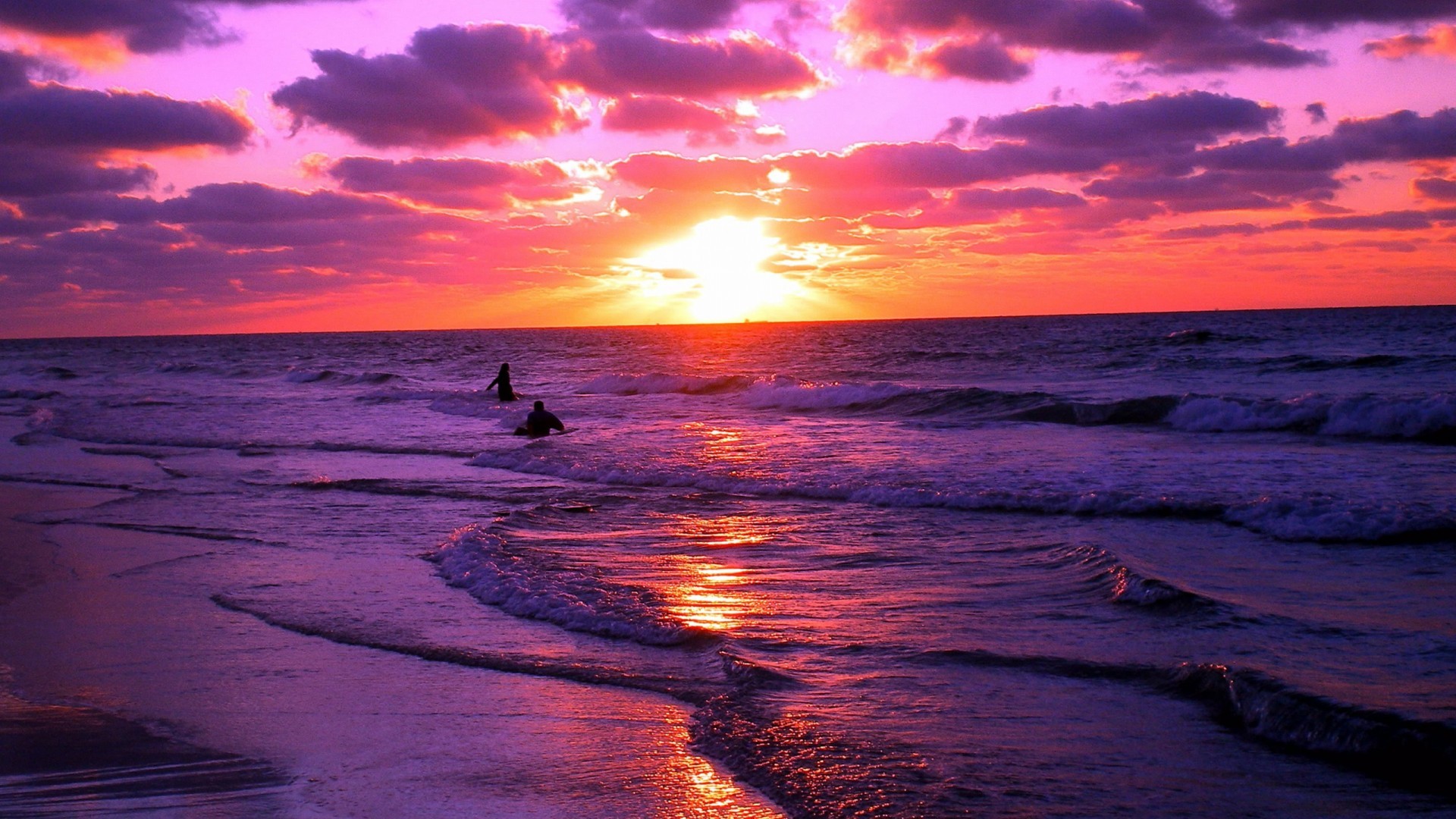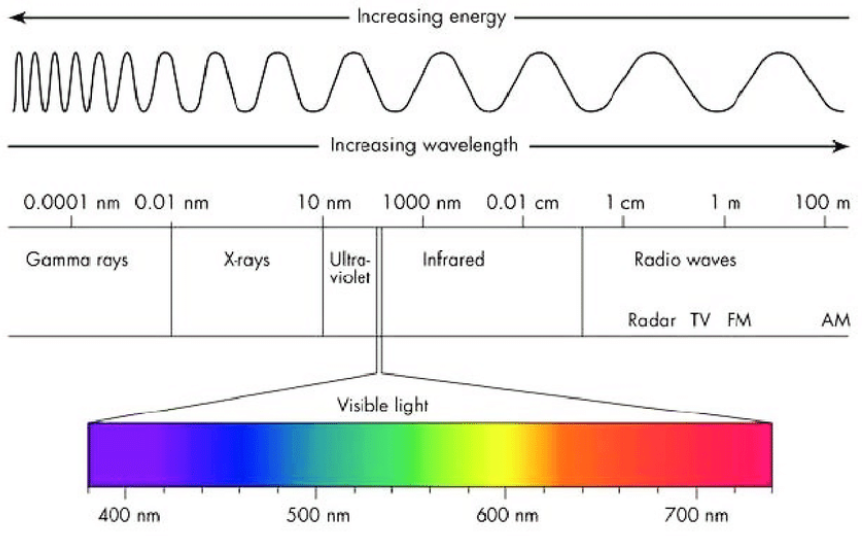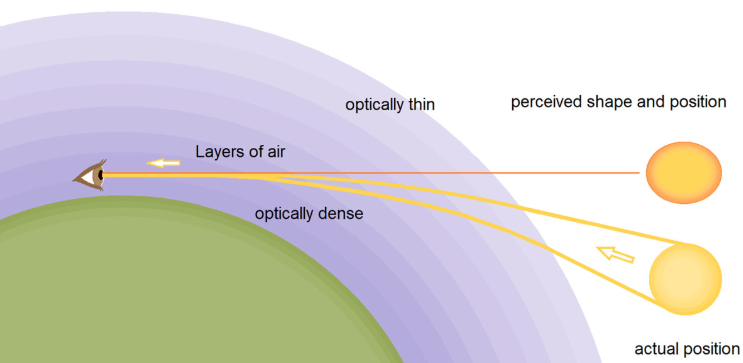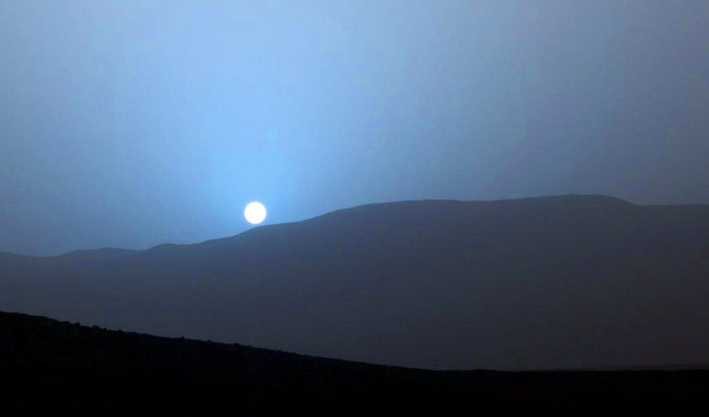Ever Seen a Blue Sunset/Sunrise?

Sunsets; breathtaking - as if the sky is painting itself to be admired. Not just sunsets, but sunrises too, are serene and vibrant. Those orangish-pink colours, spreading the flair in the sky, giving away positive vibes... But wait, have you ever noticed a blue sunrise/sunset? Like the sky being blue and sun being yellow as it is during afternoons or late mornings? I'm sure you wouldn't have seen that happening, unless you live on Mars (you'll see why, at the end).
White light is made of 7 colours; to prove this, one method is using the Newton's Disk. It's a disk made with sectors of all the seven colors, which when spun at a high speed, appears to be white. Here's a video showing it:
Now, you gotta understand how different colours behave. That's right, not all light is the same.
Visible light, i.e. the light which we can perceive (unlike UV), are of different colours, and all these colours have different wavlengths, ranging from approx. 380nm to 750nm.

In the above figure, you can see that violet light has the least wavelength, and blue light is the next colour with more wavelength, and red light has the highest wavelength.
One last crucial piece of info: Light of higher wavelength scatters less, and light of less wavelength scatters more, since light of shorter wavelengths interacts more strongly with air molecules. The intensity of scattering is defined by this formula:
I ∝ 1 λ4
This phenomenon is known as Rayleigh Scattering, named after Lord Rayleigh for discovering it.
Rayleigh scattering is the elastic scattering of light (or other electromagnetic radiation) by particles that are much smaller than the wavelength of the radiation.
It is seen that as the wavelength increases, the intensity decreases by a large scale.
Going by this, we understand that violet light scatters the most, blue light scatters the most after violet light, and red light scatters the least.
This scattering defines a major part of our goal. White light is composed of 7 colours: Violet, Indigo, Blue, Green, Yellow, Orange, Red. The light that sun gives out too, is white. This means the light that is sent out by the sun, is white, meaning it contains all these 7 colours.
- Fun Fact: It is because of white light being emmited by the sun that from outer space the sun looks white.
During the day, the sun is overhead, meaning it is above the horizon. Therefore, it has to travel less distance than it has to during sunrise/sunset. Since this distance is less, the light given out by the sun travels a less distance, and all the 7 colours would reach the earth. Violet light scatters the most, then why isn't the sky violet instead of blue? Well, it's because of the sun, as the intensity of violet light is less than the blue light emitted by it, & the upper parts of the atmosphere, which block most of UV and colours of light of the violet-end (including indigo) of spectrum from entering the troposphere (the part of atmosphere in which we live, which is the bottom-most level). In addition to this, the human eye, too is less sensitive to violet light than it is to blue light. Therefore, the only colors now entering the troposphere are blue, green, yellow, orange & red. Amongst these, blue light scatters the most, therefore making the sky blue.
Moving on to our initial question: Why isn't a sunset/sunrise blue? - this is because the distance light from the sun has to travel during these times is, larger, due to the curvature of Earth (see image below). Light reaches us despite it travelling only in straight lines, because of refraction. Even though atmosphere has a low refractive index, it still is optically denser than a vacuum. This causes the bending of light as it reaches us.
Even with this larger distance, the colors mentioned earlier would reach the atmosphere; however, this time, the blue light scatters the most, so, by the time light from the sun reaches us, only the colors with large wavelengths (orange - red) would remain the least scattered (refer to formula above), therefore being visible to us.

I had mentioned that you could see a blue sunset if you live on Mars, remember? On Earth, sunsets appear red because the thick atmosphere scatters away most of the blue light, leaving only the longer red and orange wavelengths to reach our eyes. Mars, however, has a thin atmosphere filled with fine reddish dust particles that scatter light differently. Instead of dispersing blue light in all directions as on Earth, the Martian dust tends to scatter blue light forward, especially along the line of sight toward the Sun. As a result, when the Sun sets on Mars, the region around it glows blue while the rest of the sky remains tinted red from the dust, producing a striking reversal of Earth’s sunset colors.

And that, my friends, is why the sky paints itself in fiery reds and calm blues. Kudos to Lord Rayleigh for discovering this! Nature really is the greatest artist out there 🎨. Meanwhile, spare a thought for blue LED signboards—they never stood a chance against Rayleigh scattering 😅. Anyway, thanks for sticking around—I hope this little journey was as fun to read as it was to write! Next time you watch a sunset, remember you’re looking at millions of tiny air molecules painting with physics 🔭.